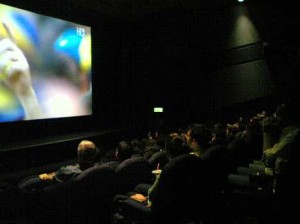One reason that recording at 48KHz would make sense is the analogy of rumble in the low frequencies. Humans cannot actually hear or listen frequencies below 20Hz but we can feel it. The same thing that when an earthquake occurs; the low frequency waves (which are around 10Hz) cannot be heard but can only be felt. You can only feel that it’s there but you cannot listen to it.
Same thing with very high frequencies which can be found around 20 KHz above; yes it is a fact you cannot listen to these frequencies anymore but you can feel their presence.
But here is the catch, supposing you recorded audio at 48 KHz so it has audio frequency content up to 24 KHz theoretically. So if you play a high resolution audio in a high accurate loudspeakers (with capability to reproduce above 20 KHz to provide that extra crisp and airness) then you get what you want – a high-fidelity and true to life recordings.
But the reality is not this; CD and MP3 players have sample rates of only 44.1 KHz so they can only reproduce up to 22 KHz theoretically. The extra crisp and brilliance captured with 48 KHz recordings are filtered and not reproduced because of the consumer CD/MP3 player sample rate limitations.
Then why you should still record at 48 KHz?
It’s the original recorded content that matters. If you record at 48 KHz, the original audio captures a wide range of audio content up to 24 KHz. Even though this is NOT yet in CD format or MP3 format, the original recorded content captures the source very accurately up to 24 KHz which has some important applications not only in CD audio and MP3.
Audio used in Video and DVD projects are reproduced at a higher sampling rate than CD audio making it possible to playback higher than 20,000Hz really well. Although this is often a subject of debate, but I notice a “BIG” difference between music produced for DVD and those that are produced for CD or MP3. If I watch a DVD movie with a great sound system or even watch movie in a digital theatre, the sound reproduced mimics’ reality. It contains those entire rumble and lows as well as the airy highs that you cannot listen but rather felt.
If you want your song or music to sound even better when included in a movie/DVD projects then it is one of the big reasons why you should be recording at a higher sampling rate. For example, if you record at 44.1 KHz then up sampled to 48 KHz for use in DVD, etc. then the audio quality is still same because the original recording is done at 44.1 KHz. Remember that you cannot further add “more realism” to your recordings if you didn’t capture it well in the first place.
So who wins: recording at 44.1 KHz or recording at 48 KHz? Recording at 48 KHz allows your music to be used in a variety of applications that includes film/movies, DVD projects, CD audio and MP3 without worrying about loss in quality or no improvement in sound quality.
Content last updated on July 30, 2012
